Volleyball drills for technique passing / defense / reception
- 2 rows of players
- 1 row on the left back
- 1 row at the right back
- create with 4 pawns a virtual line where they have to stand behind
- trainer stands at the other side of the net and throws the ball somewhere in the field.
- 1 of the 2 front rows calls LOS orIK (agree who takes short or deep)
- This player passes the ball over the net to the previous player.
- catch a round for the next player
- If you did not have the ball, join the shortest row.
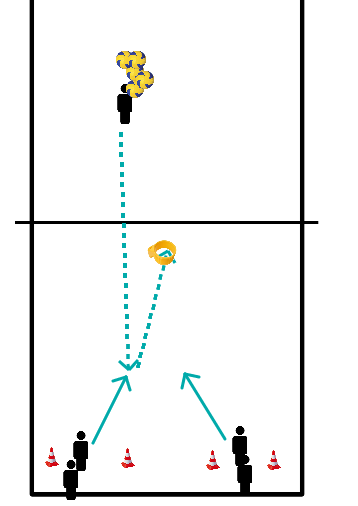
- Passing over:
- Ball always goes to the middle player
- Overhand pass. Middle player must play backwards and turn around immediately!
- Pass underhand. Middle player must play backwards and turn around immediately!
- Peppering where the pass goes to the middle player who sets it up.
- Diving balls indicated by middle player
-
- Plays the ball overhand to number 3,
- Is a reserve & takes the place of number 3,
- Passes to number 4
- Catch the ball and join behind number 5,
- Passes the ball to number 4, catches the ball and joins behind number 5, plays the ball overhand to number 7,
- Is a reserve & takes the place of number 7
- Passes to number 8,
- Catch the ball and rejoin number 1.
Addition: after catching the ball, touch the wall.
(In the 'overhand' rows/ at the passers if necessary reserve players)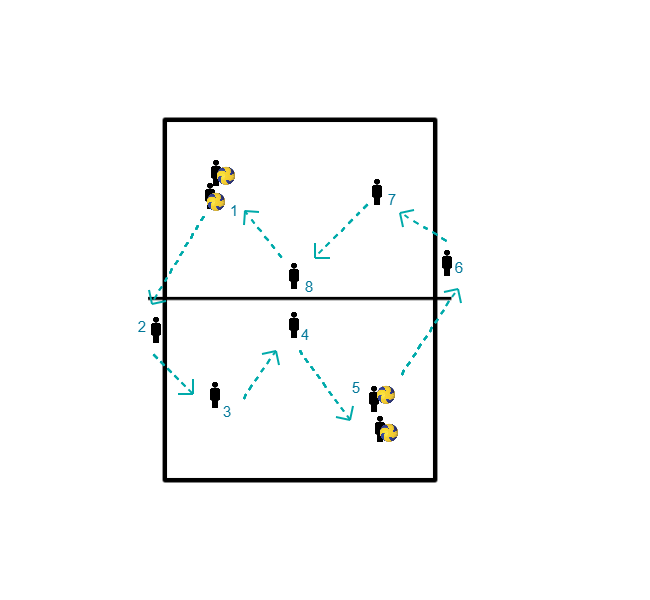
ball track = letters of the alphabet
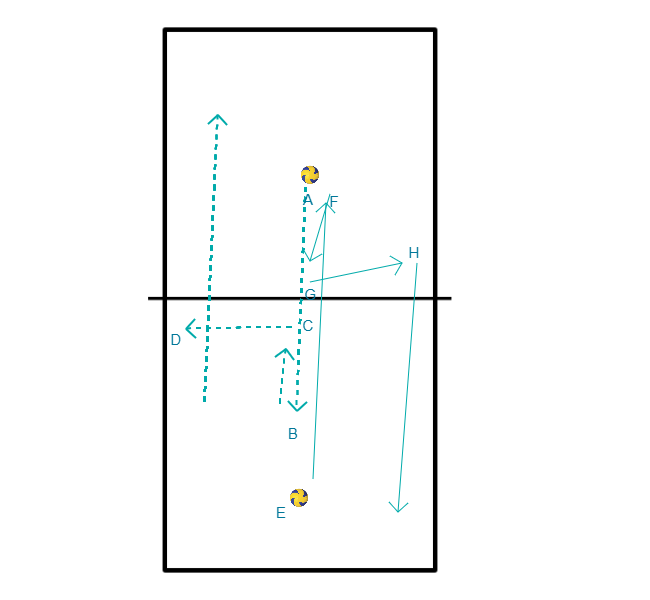
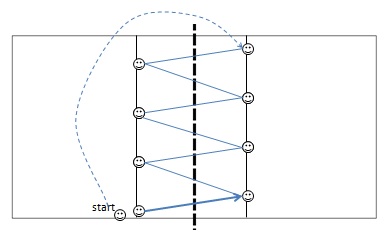
- Spread over 3m line.
- Pass the ball in a zigzag and follow through. See picture
- Later play underhand, only overhand.
- One side of the net underhand, other side overhand.
- One side of the net underhand, other side overhand.
- Form groups of 3-4 players.
- Pass under/overhands as often as possible.
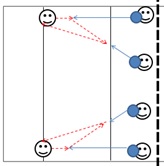
See picture. Each 3 players 2 balls. 2 players at the net a few meters apart, other player on the 3-m line and shuffle always from front to back: first r-for then l-for.
- Exercise 1: Players take turns throwing the ball, player in the backfield plays the ball back underhand.
- Exercise 2: First ball comes deep (BH return), 2nd ball comes short (OH return) - must be catchable!
- Exercise 3: Throwers stand a little further apart and throw straight: player with ball on the sideline throws deep, other short (not catchable)
- Exercise 4: player with ball on the sideline does an intermediate test and then gives a deep ball, player in the field takes this ball OH and plays it to player B at the net. Player B can then immediately return a ball on the 3-meter line or test the ball to the player on the sideline and then the exercise starts again.
After x-number of balls or after a certain time swap places.
Make pairs.
1 with the ball at the net
Step 1: the other one gets down on his knees at 7 metres. then he lies down flat on his belly in the sand and makes a butterfly. now the range of the player has been determined.
Step 2: Same exercise but now from crouch and 1 step which increases the reach (again let the player determine the reach).
change after 15 balls
- 2 rows of players
- 1 row on the left back
- 1 row at the right back
- create with 4 pawns a virtual line where they have to stand behind
- trainer stands at the other side of the net and throws the ball somewhere in the field.
- 1 of the 2 front rows calls LOS orI (agree on that)
- this player passes the ball (in/to) the basket that is between position 2 and 3.
- Ball in the basket is 2 points for the team, against the basket is 1 point.
- Set a target for the team, for example 25 points.
It is possible to add a distributor and an attacker, provided the assignment runs well.
- 2 rows of players
- 1 row on the left back
- 1 row at the right back
- create with 4 pawns a virtual line where they have to stand behind
- trainer stands at the other side of the net and throws the ball somewhere in the field.
- 1 of the 2 front rows calls LOS orIK (agree on that)
- this player passes the ball over the net to the other (who did not call loose)
- player who has caught the ball puts it in the bin.

- A serves to B.
- B passes the ball to the playmaker, who then plays a high ball into the backfield.
- B defends this ball back to the playmaker, who then gives a setup for A.
- A attacks on this setup.
After the attack, A takes B's place and B becomes a reserve. The playmaker stays.
The outfield attackers use the left half of the court with one playmaker. The middle attackers and diagonal attackers use the right half with another playmaker.
Extension:
- After the service, A takes a second ball.
- After B's attack A throws this ball into the field.
- B plays this ball to the playmaker, the playmaker gives a setup.
- B attacks again.
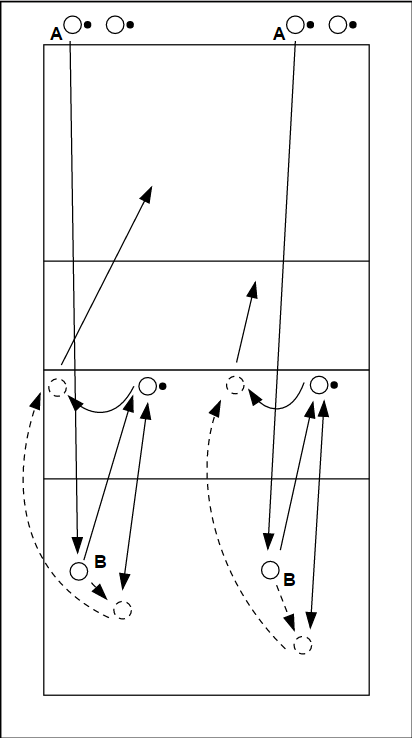
Blocking:
Defense:
Moving as long as you can is in my case the moment the attacker barely touches the ball. At that moment, you make a split step as a defender and make sure that your body's centre of gravity (LZP) has been brought forward. So do not move backwards when the ball is hit because your LZP is then behind you and you are too late to defend the ball in front of you. If the ball is defended, then rally. 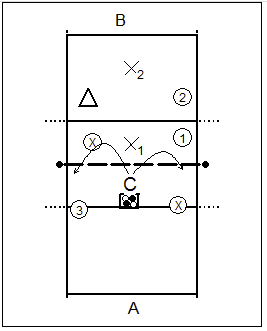 |







